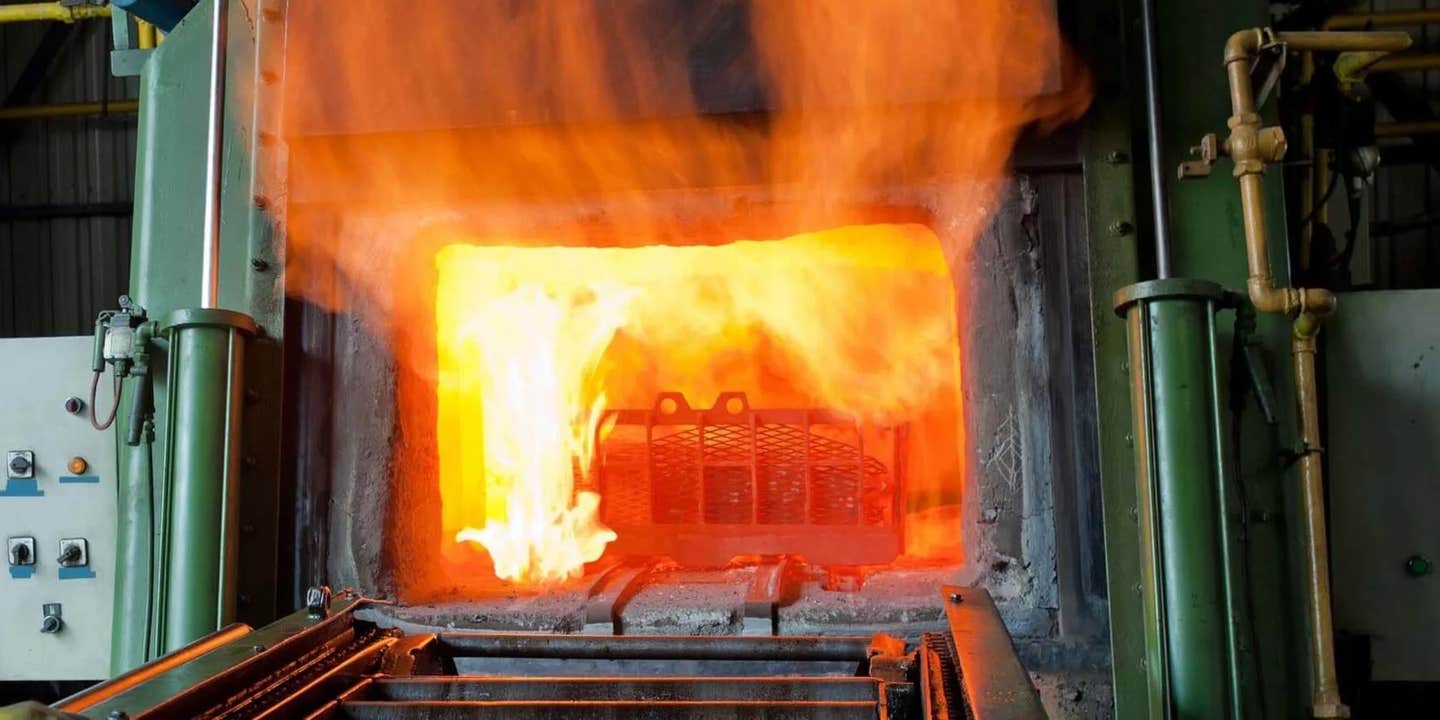Ancient Bronze Age material looks to accelerate use of renewable energy in factories
A Bronze Age technology may offer a fast and inexpensive solution to help achieve the United Nations climate goal of net zero emissions by 2050

Production of glass, iron, steel, and cement requires high-temperature heat. (CREDIT: Getty Images)
A technology rooted in the Bronze Age might offer a fast and inexpensive solution to achieve the United Nations' goal of net-zero emissions by 2050, according to recent research led by Stanford and published in PNAS Nexus.
This innovative approach involves assembling heat-absorbing bricks in an insulated container to store heat generated by solar or wind power for later use at the high temperatures required for industrial processes. The heat can be released as needed by passing air through channels in stacks of “firebricks,” allowing factories in industries such as cement, steel, glass, and paper to operate on renewable energy even when the wind isn’t blowing, or the sun isn’t shining.
These systems, which some companies are beginning to commercialize, are a form of thermal energy storage. The bricks are made from materials similar to those that lined primitive kilns and iron-making furnaces thousands of years ago. By adjusting the material composition, the bricks are optimized for heat storage instead of insulation.
While batteries can store electricity from renewable sources to generate heat on demand, firebricks store heat directly and are significantly cheaper. “The difference between firebrick storage and battery storage is that the firebricks store heat rather than electricity and are one-tenth the cost of batteries,” explains Mark Z. Jacobson, a professor of civil and environmental engineering at Stanford. “The materials are much simpler too. They are basically just the components of dirt.”
Many industries require high-temperature heat for manufacturing. For example, cement production needs temperatures of at least 1,300 degrees Celsius (nearly 2,400 degrees Fahrenheit), while glass, iron, and steelmaking require around 1,000 degrees Celsius (about 1,800 degrees Fahrenheit) or hotter.
Currently, about 17% of global carbon dioxide emissions result from burning fossil fuels to produce heat for industrial processes. According to Jacobson and his colleague Daniel Sambor’s calculations, generating industrial heat from renewable sources could virtually eliminate these emissions.
“By storing energy in the form closest to its end use, you reduce inefficiencies in energy conversion,” says Sambor, a postdoctoral scholar in civil and environmental engineering. “It’s often said in our field that ‘if you want hot showers, store hot water, and if you want cold drinks, store ice’; so this study can be summarized as ‘if you need heat for industry, store it in firebricks.’”
Related Stories
The researchers examined the impact of using firebricks to store most industrial process heat in 149 countries in a hypothetical future where each country has transitioned to wind, geothermal, hydropower, and solar for all energy needs. These countries are responsible for 99.75% of global carbon dioxide emissions from fossil fuels.
“Ours is the first study to examine a large-scale transition to renewable energy with firebricks as part of the solution,” Jacobson said. “We found that firebricks enable a faster and lower-cost transition to renewables, benefiting everyone in terms of health, climate, jobs, and energy security.”
Using computer models, the team compared costs, land requirements, health impacts, and emissions in two scenarios for a hypothetical future where 149 countries in 2050 are using renewables for all energy purposes.
In one scenario, firebricks provide 90% of industrial process heat. In the other scenario, there’s zero adoption of firebricks or other forms of thermal energy storage for industrial processes. In the absence of firebricks, heat for industrial processes would come from electric furnaces, heaters, boilers, and heat pumps, with batteries used to store electricity for those technologies.
The study found that the scenario with firebricks could reduce capital costs by $1.27 trillion across the 149 countries compared to the scenario without firebrick storage. It also reduces demand for energy from the grid and the need for battery storage capacity.
Solutions for accelerating the transition to clean energy are also linked to human health. Previous research has shown that air pollution from burning fossil fuels causes millions of premature deaths each year. “Every bit of combustion fuels we replace with electricity reduces that air pollution,” Jacobson said. “And because there is a limited amount of money to transition at a high speed, the lower the cost to the overall system, the faster we can implement it.”
Jacobson has spent his career understanding air pollution and climate problems and developing energy plans for countries, states, and cities to address these issues. His focus on firebricks is relatively new, driven by a desire to find effective solutions that can be adopted quickly.
“If we propose an expensive and difficult method of transitioning to renewable electricity, we’d have very few takers,” he said. “But if this will save money compared to previous methods, it will be implemented more rapidly. What excites me is that the impact is very large, whereas many technologies I’ve looked at have marginal impacts. Here, I can see a substantial benefit at a low cost from multiple angles, from reducing air pollution mortality to making it easier to transition the world to clean renewables.”
Note: Materials provided above by The Brighter Side of News. Content may be edited for style and length.
Like these kind of feel good stories? Get The Brighter Side of News' newsletter.
Joshua Shavit
Science & Technology Writer | AI and Robotics Reporter
Joshua Shavit is a Los Angeles-based science and technology writer with a passion for exploring the breakthroughs shaping the future. As a contributor to The Brighter Side of News, he focuses on positive and transformative advancements in AI, technology, physics, engineering, robotics and space science. Joshua is currently working towards a Bachelor of Science in Business Administration at the University of California, Berkeley. He combines his academic background with a talent for storytelling, making complex scientific discoveries engaging and accessible. His work highlights the innovators behind the ideas, bringing readers closer to the people driving progress.



